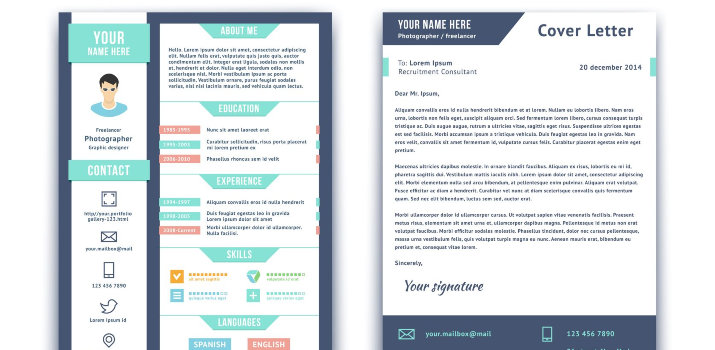Ah, cover letter writing – that most enjoyable of tasks. Wait! Where are you going?
Love it or loathe it, a good cover letter can make the difference between your CV ending up in the bin and it ending up in the shortlist pile – so you really need to excel here. One way to do this is to tailor your letter to the company you’re applying for – which isn’t particularly hard once you’ve learned a few tricks. Read on and find out how to do it.
First, acquire your target
Let’s get things straight – in this day and age, a blanket cover letter just doesn’t cut it for most jobs. Although you may not feel like tailoring an application for an employer who might not even reply, it is a necessary evil. It’s also something that gets easier with practice. But how do you begin this often thankless task?
Firstly, there are a couple of things that you need to consider before you can put pen to paper. The most important of these is to think about the type of job you are applying for. Different job roles require different things from a cover letter, with some being very different indeed.
This is most obvious in creative roles, where you need your cover letter to showcase your talents – demonstrating to the reader what you could bring to their business.
Next up, you need to take a look at the company’s website and see if you can gather any useful information about the company’s tone of voice from it.
If there are any words that the company seem particularly fond of, it may be useful to include these in your cover letter – not only because people like to read views that reflect their own, but also because many companies use software to screen job applications for keywords before they bother to read them. If there’s a word they are particularly keen on, then it may crop up as a search term if such systems are used.
Shock and awe
If you read the article we wrote a little while ago about crafting the opening statement on your CV, then you’ll already know the metaphor we used about Hollywood directors making their money in the opening few minutes of a movie. Quite simply, it’s the most important bit. This is as true for your CV or cover letter as it is for the next blockbuster though. Openings count.
Your first paragraph needs to be good. It needs to grab them by the throat, drag them in and knock them dead (figuratively speaking).
The truth is that the majority of cover letters will only ever get skim-read by busy or bored hiring managers – and the last thing you want to do in this situation is to bore them even more. For this reason, your first paragraph needs to be good. It needs to grab them by the throat, drag them in and knock them dead (figuratively speaking).
But how can you do this? How can you make the opening paragraph of your cover letter hit them in just the right spot, so they’ll smile, or maybe even chuckle? How can we make them carry on reading?
Speak to them.
That’s really all there is to it – and this is where the research and thinking you did in the section above will come in absolutely invaluable. If you know your industry and you have a vague idea of the sort of person that you’re writing for, then you can ensure that your intro paragraph presses all the right buttons to make them go ‘ooh’.
So the golden rule is to know your enemy (sorry, audience), but there are three other things to consider when writing your opening paragraph. Here we have the silver rules:
You need to make it original. You need to make it relevant. You need to make it catchy.
Originality refers to the avoidance of cliches and buzzwords. You want to stick out don’t you? No one wants to hear how you’re going to ‘leverage your hunger and team-player abilities to strategically enhance organic growth going forward’ – it’s meaningless drivel.
Relevancy means that your opening references important questions raised in the job description (which you of course know off by heart, having read it at least three times). Tell them something that you know they want to hear.
Catchiness is the difficult part, but it will be made a lot easier if you utilise Occam’s razor. In other words: keep it simple, stupid. Every word in your opening paragraph should have something to contribute. If it doesn’t, kill it. Try playing about with the likes of the Hemingway app to imitate the master of simplicity himself.
Flaunt it
Ok, so the intro paragraph has done its job (hopefully). You’ve got them hooked. Next you need to sell yourself to them. The key thing here is something else that we mention in the CV article linked to above – you need to not only mention your relevant skills, but also to demonstrate them. If you’re not demonstrating, then you’re not convincing.
We need facts; we need cold, hard facts. Don’t just say ‘I’m an experienced user of Adobe Photoshop’; don’t even say ‘I’ve used Photoshop so much over the years that it’s become part of my very fingers’; instead say something like ‘I’ve used Photoshop a lot over the past decade, and I’ve used it to deliver on projects including an award-winning magazine cover that you can see over at my blog’. QED, as they say.
By demonstrating something to the person reading your letter, you’re separating yourself from the herd of people who inevitably won’t bother. This is seldom a bad thing. This section also needs to be relevant – so most of the things you demonstrate here should be things that are asked for in the job description.
Do remember to ensure that any claims you make in your cover letter match up with what you say in your CV. You don’t want to make yourself sound like a liar.
Make them an offer they can’t refuse
Once you’ve demonstrated your relevant skills to the reader, you’re left with the task of closing your letter. As with any sales pitch (which is of course all a cover letter really is), the best way to do this is with a call to action.
There are hundreds of books and articles that will give differing advice on how to craft a good call to action, but at their heart, every single one shares something in common: they motivate the receiver.
Perhaps the best motivation to do something is for someone to put a gun to your head. It tends to make you forget about any qualms you had beforehand in about 90% of situations. The motivation will be short lived though, and no one really enjoys it. This is why it’s best not to come on too strong with your call to action. Ever walked out of a shop because of a pushy salesperson? Same thing.
So how can we motivate this mythical reader? How can we give them a reason to call you? Well one way to do this is through the use of statistics. Remember our big long rant about demonstrating your skills above? Exactly. So why not try adding something like: ‘My actions were shown to have increased my employer’s sales of chicken drumsticks by 10% over the course of a year’ into your concluding paragraph? Obviously you can’t just make this stuff up, but you should always be on the lookout for catchy statistics where your job is concerned.
Perhaps the best motivation to do something is for someone to put a gun to your head. It tends to make you forget about any qualms you had beforehand in about 90% of situations.
Employers don’t really care about what a beautiful and unique snowflake you are – they care about the bottom line. Show them how you’ll increase theirs, and then ask for an interview.
And so the waiting game begins …
Hopefully at this point you should have a better idea of how to target a cover letter at whoever’s reading it without ever actually meeting them (or even really knowing who they are). Time to get it proof-read by someone good – because you never know who’s going to turn out to be able to use an apostrophe correctly nowadays.
Do remember that no matter how good your cover letter is, and no matter how long you spend tailoring it, you still might not even get a reply. We’ve already written about how to deal with rejection, so we won’t go into too much detail here, but be safe in the knowledge that it was probably just because there was someone cheaper or more experienced out there. It doesn’t really help your situation, but there you go.
With this in mind, unless you’re applying for your absolute dream job, we wouldn’t recommend spending too long tailoring your letter. It’s fine to have a skeleton template that you edit and fill in as you see fit – but do remember to at least visit a company’s website and find out what it is that they do before you start typing. Good luck!



